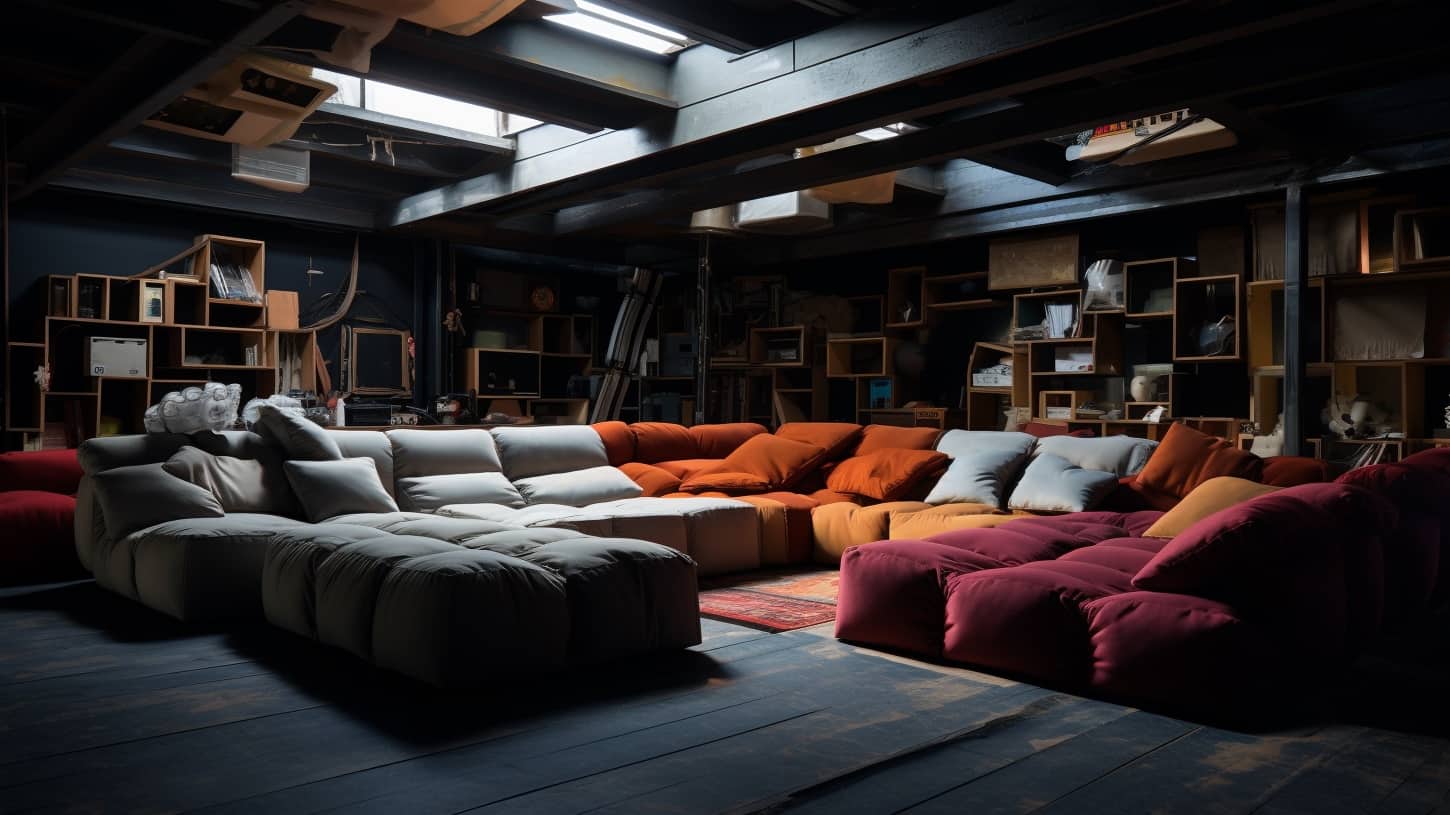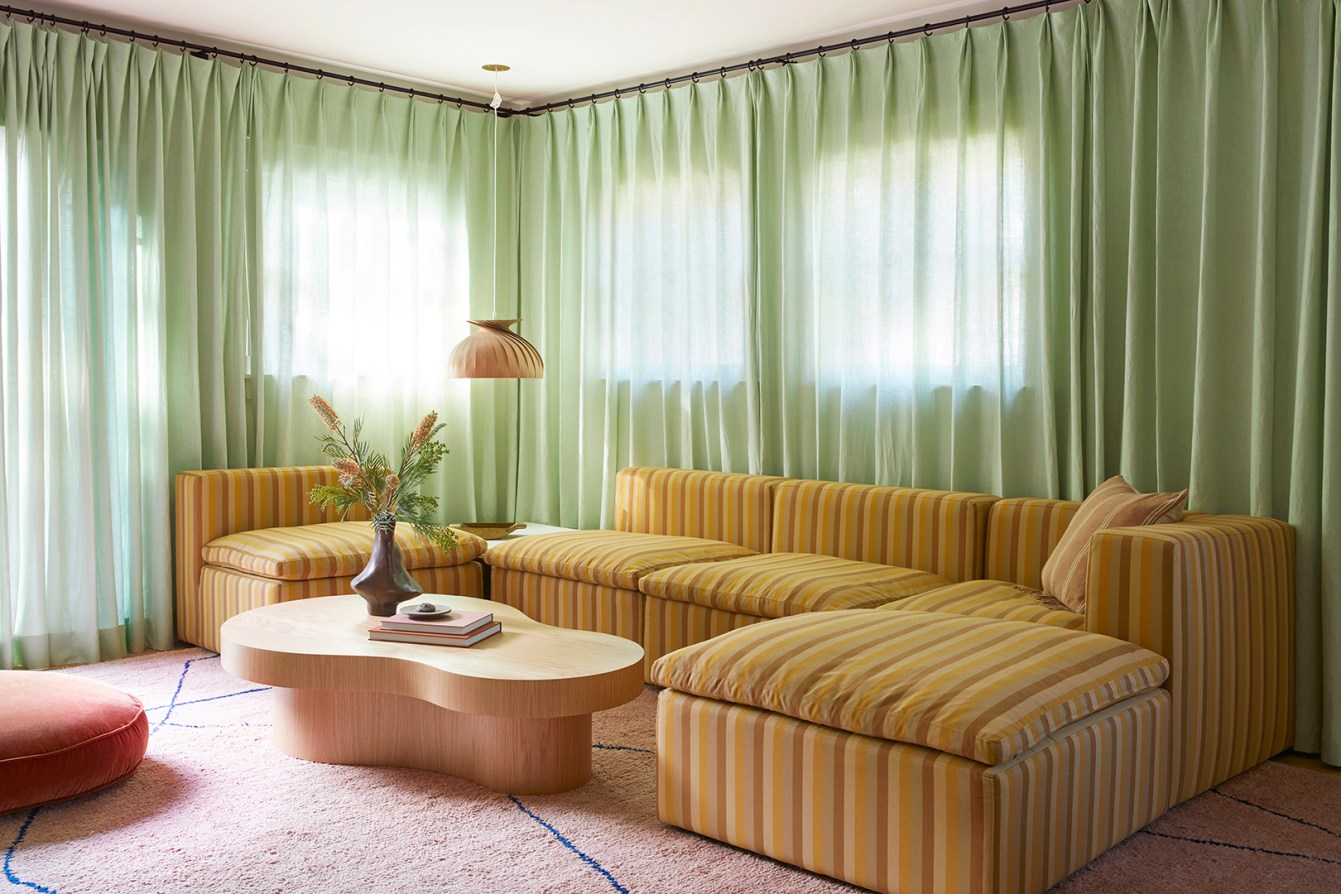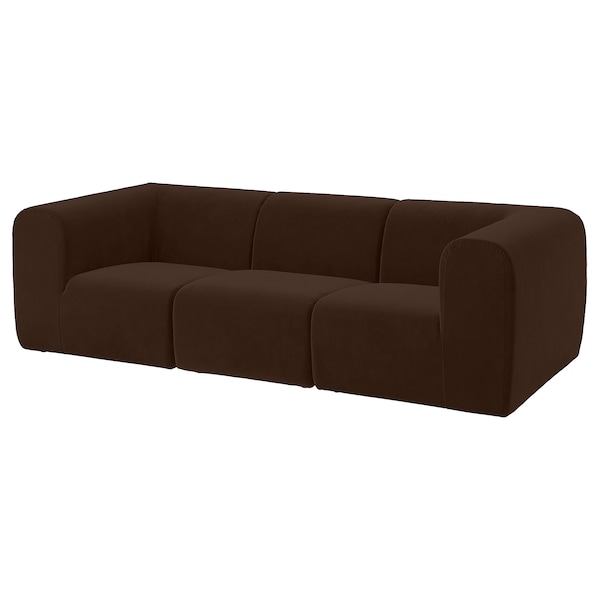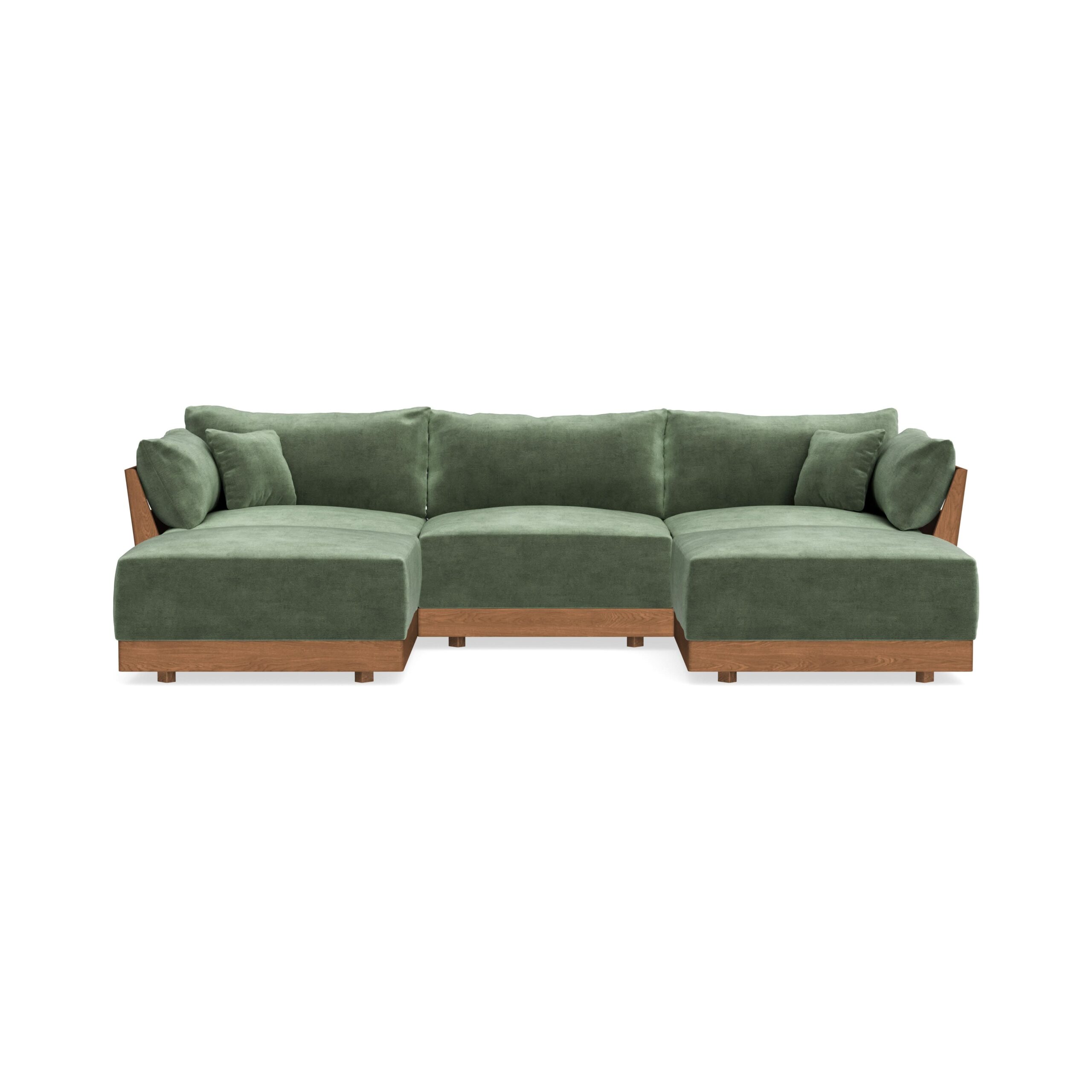
The Triple Threat: 2025’s Most Practical Sofas That Are Eco-Friendly, Pet-Proof, AND Space-Saving
Finding the perfect sofa for your home has always been a balancing act. In the past, you might have had to choose between sustainability, durability against pet damage, or a design that works in smaller spaces. But 2025 is changing the game. Today’s innovative furniture manufacturers are finally addressing multiple consumer needs simultaneously, creating what we’re calling the “triple threat” sofa: pieces that excel in eco-friendliness, pet resistance, and space efficiency.
As more households juggle environmental concerns, furry family members, and the reality of compact living spaces, these multi-functional sofas are becoming the holy grail of furniture shopping. Let’s explore how you can bring one of these versatile pieces into your home without compromising on style, sustainability, or practicality.

Understanding the Triple Threat Criteria
Before we dive into specific recommendations, let’s clarify what makes a sofa truly deserving of the “triple threat” title.
What Makes a Sofa Truly Eco-Friendly?
Eco-friendly sofas go far beyond marketing buzzwords. The most sustainable options feature:
The best eco-friendly sofas of 2025 aren’t just made with sustainable materials—they’re designed with the entire lifecycle in mind, from sourcing to eventual recycling or biodegradation.
Key Elements of Pet-Resistant Furniture
Pet owners know the struggle: finding furniture that can withstand claws, fur, accidents, and the occasional chewing session. Today’s pet-friendly sofas incorporate:
The best pet-friendly sofas don’t just survive your pets—they’re designed with their habits and needs in mind.
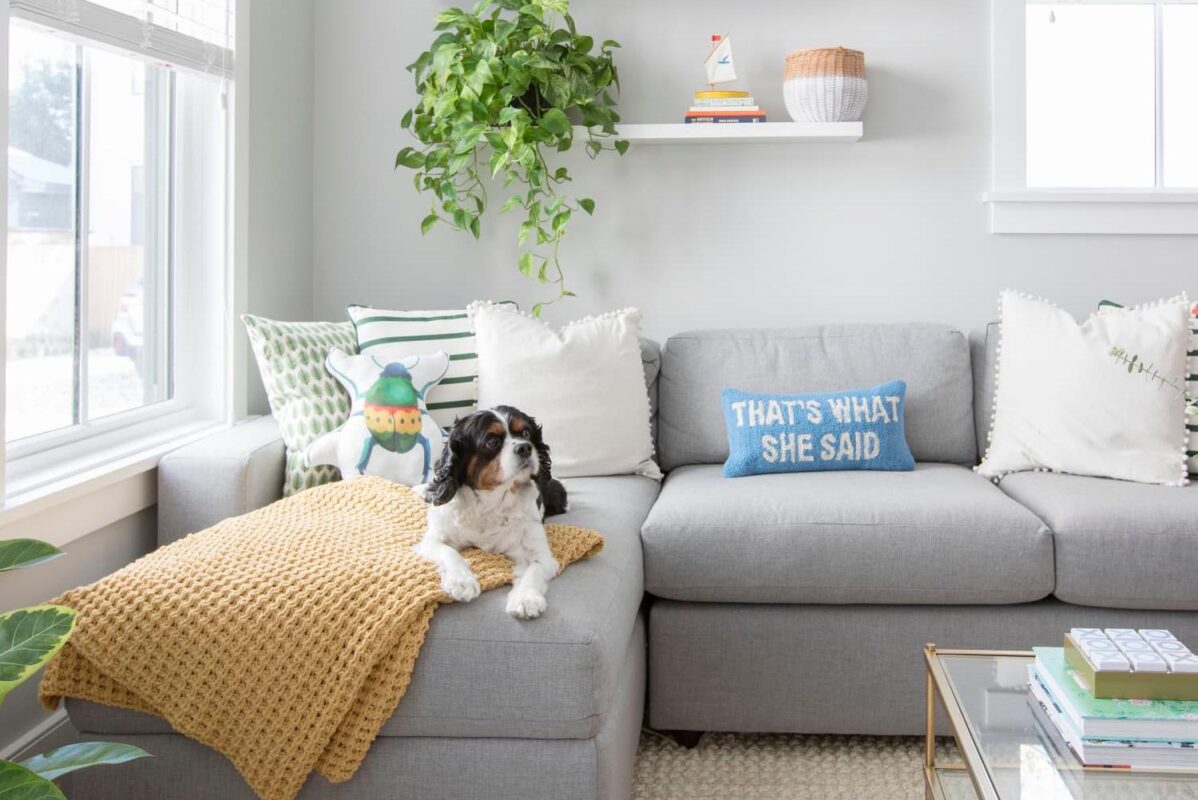
How Modern Sofas Maximize Space Efficiency
Space-saving furniture has evolved far beyond the clunky futons of yesteryear. Today’s space-efficient sofas offer:
The most innovative space-saving sofas of 2025 adapt to your lifestyle rather than forcing you to adapt to them.
Top 7 Sofas That Meet All Three Criteria
After extensive research and testing, we’ve identified seven standout sofas that excel in all three categories—eco-friendliness, pet-resistance, and space efficiency. Each offers a unique approach to the triple threat challenge.
1. Sabai Essential Sectional
Price Range: $1,295–$2,195
Sustainability Credentials: FSC-certified wood, recycled water bottle fabric, CertiPUR-US certified foam
Pet-Friendly Features: Removable and washable covers, tight weave resistant to claws
Space-Saving Benefits: Modular design, compact footprint with maximized seating
Sabai has quickly become a leader in sustainable furniture, and their Essential Sectional doesn’t disappoint. The brand takes pride in crafting pieces that are “cozy, conscious, and convenient”—a perfect summary of the triple threat approach. Their recycled velvet fabric has proven remarkably resistant to pet hair and light scratching, while the modular design allows for multiple configurations in smaller spaces.
Customer reviews consistently mention how well this sofa holds up to daily life with pets, with one owner noting: “After a year with two cats and a dog, our Sabai sectional still looks brand new after a quick wash of the covers.”
2. Burrow Nomad Sofa
Price Range: $1,195–$1,995
Sustainability Credentials: Sustainably sourced hardwood, upcycled fabrics, recyclable packaging
Pet-Friendly Features: Stain-resistant, scratch-resistant olefin fiber upholstery
Space-Saving Benefits: Modular design, built-in USB charger, compact shipping
Burrow’s Nomad collection offers remarkable versatility for smaller spaces. The modular design ships in apartment-friendly boxes and can be assembled in minutes without tools. What makes it stand out for pet owners is the tightly woven olefin fiber upholstery that resists claws while remaining soft and comfortable. The fabric is naturally stain-resistant without the use of harmful PFAS chemicals, making it both pet-friendly and eco-conscious.
The space-saving features extend beyond just the physical footprint—integrated USB chargers eliminate the need for additional side tables in tight spaces.
3. Home Reserve Sectional
Price Range: $734–$3,689
Sustainability Credentials: SFI-certified wood, CertiPUR-US foam, recycled plastic bottle filling
Pet-Friendly Features: Machine-washable covers, replaceable parts
Space-Saving Benefits: Built-in storage under every seat, adaptable configuration
Home Reserve has created perhaps the most practical option on our list. Every seat contains storage space—perfect for tucking away pet toys or extra blankets in small living areas. The covers are fully machine washable, and every part of the sofa can be replaced individually if damaged, extending its lifespan significantly.
What truly sets Home Reserve apart is their commitment to sustainability through longevity. Rather than replacing your entire sofa when one cushion gets destroyed by your pet, you can simply order that specific part—reducing waste and saving money.
4. Silk & Snow Aire Modular Couch
Price Range: $1,300–$4,750
Sustainability Credentials: GOTS certified, OEKO-TEX certified, PFAS-free
Pet-Friendly Features: Stain-resistant without harmful chemicals, removable covers
Space-Saving Benefits: Modular design with endless configuration options
The Aire Modular Couch from Silk & Snow stands out for its impressive certifications and thoughtful design. The PFAS-free stain resistance is particularly noteworthy, as many competitors still use these “forever chemicals” in their treatments. The modular design allows for countless configurations, making it adaptable to different room layouts and space constraints.
Customers particularly praise how well pet hair brushes off the fabric, with one reviewer noting: “Unlike our previous velvet sofa that seemed to incorporate pet hair into its very being, the Aire releases fur with just a quick vacuum.”
5. Albany Park Kova Sofa
Price Range: $1,389–$2,789
Sustainability Credentials: OEKO-TEX certified fabrics, handmade in North America, free from flame retardants
Pet-Friendly Features: Performance fabrics, removable and washable covers
Space-Saving Benefits: Modular design, apartment-friendly packaging
Albany Park’s Kova collection offers impressive versatility with its modular design. The performance fabrics are specifically engineered to withstand pet claws while remaining soft and comfortable. What’s particularly impressive is how the company has eliminated toxic flame retardants without compromising safety, using naturally fire-resistant materials instead.
The space-saving aspects extend to delivery and assembly—the sofa arrives in apartment-friendly boxes and can be assembled in about 15 minutes, making it ideal for urban dwellers with narrow stairwells or small elevators.
6. Joybird Bryant Sofa
Price Range: $1,856–$2,766
Sustainability Credentials: GREENGUARD Gold certified options, low-VOC glues & stains, tree planting program
Pet-Friendly Features: Performance fabric options specifically designed for pets
Space-Saving Benefits: Compact design with maximized seating depth
Joybird’s Bryant Sofa combines mid-century modern aesthetics with practical features for pet owners. Their performance fabric options have been specifically tested against common pet challenges like claw scratching and accident cleanup. The brand’s commitment to sustainability includes planting trees to offset their wood usage.
The Bryant’s design is particularly clever for smaller spaces—while compact in overall footprint, the seating area is surprisingly deep and comfortable, making it feel more luxurious than its dimensions would suggest.
7. Medley Brentwood Sofa
Price Range: $3,299–$4,009
Sustainability Credentials: GOLS certified natural latex, FSC-certified wood, zero flame retardants
Pet-Friendly Features: Durable construction, natural materials safe for pets
Space-Saving Benefits: Clean lines, raised legs for visual spaciousness
For those with a higher budget seeking the absolute pinnacle of eco-friendly materials, Medley’s Brentwood Sofa is unmatched. Their use of GOLS-certified natural latex instead of conventional foam eliminates many of the chemicals found in traditional sofas. The solid construction holds up exceptionally well to active pets.
While not modular, the Brentwood’s design incorporates several visual tricks to maximize space efficiency—the raised legs create a sense of airiness, and the clean lines prevent it from overwhelming smaller rooms.
Material Guide: The Best Fabrics for Eco-Conscious Pet Owners
The fabric of your sofa is where all three of our criteria—eco-friendliness, pet-resistance, and space efficiency—intersect most directly. Here’s how different upholstery options stack up:
Organic Cotton Canvas
Sustainability: High (when GOTS certified)
Pet Resistance: Medium
Space Efficiency: High (lightweight appearance)
Organic cotton canvas offers excellent breathability and is free from pesticides and harmful chemicals. While not inherently stain-resistant, many manufacturers now offer PFAS-free treatments that can improve its performance with pets. The natural, lightweight appearance works well in smaller spaces.
Recycled Polyester Performance Fabrics
Sustainability: Medium-High (reduces plastic waste)
Pet Resistance: Very High
Space Efficiency: High (thin profile, many color options)
These innovative fabrics repurpose plastic bottles into durable, pet-friendly upholstery. The tight weave resists claws exceptionally well, and most are engineered to repel stains and moisture. The thin profile doesn’t add bulk to the sofa’s dimensions, making them excellent for space-conscious designs.
Hemp Blends
Sustainability: Very High
Pet Resistance: Medium-High
Space Efficiency: Medium
Hemp requires minimal water and no pesticides to grow, making it one of the most sustainable fiber options. When blended with other fibers for softness, it creates a remarkably durable fabric that stands up well to pet wear. The natural texture adds visual interest without overwhelming small spaces.
Microfiber
Sustainability: Medium (depends on manufacturing)
Pet Resistance: Very High
Space Efficiency: High (thin profile)
While not the most sustainable option, some manufacturers now produce microfiber using improved processes with reduced environmental impact. Its exceptional resistance to pet claws, stains, and hair makes it worth considering for households with multiple or particularly destructive pets.
Natural Leather
Sustainability: Medium (if byproduct and vegetable-tanned)
Pet Resistance: High for scratches, Medium for stains
Space Efficiency: Medium
Quality leather can be surprisingly eco-friendly when it’s a byproduct of the food industry and tanned using vegetable-based methods rather than chromium. It develops a patina with pet scratches rather than fraying, though it can be more vulnerable to stains from accidents. Its durability means fewer replacements over time.
Vegan Leather Alternatives
Sustainability: Varies widely (plant-based options are best)
Pet Resistance: High
Space Efficiency: High (thin profile)
Not all vegan leathers are created equal. Avoid PVC-based options in favor of innovative plant-based alternatives made from pineapple leaves (Piñatex), apple peels, or mushroom leather. These newer materials offer excellent resistance to pet damage while maintaining a slim profile ideal for smaller spaces.
Smart Shopping Strategies
Finding your perfect triple threat sofa requires some strategic shopping. Here’s how to make the process smoother and more successful:
When to Buy for the Best Deals
The furniture industry follows predictable sales cycles. The best times to purchase include:
Many sustainable furniture brands also participate in Earth Day promotions in April, offering discounts on their eco-friendly lines.
Questions to Ask Retailers About Sustainability Claims
To avoid greenwashing, come prepared with these questions:
How to Test for Pet Resistance Before Purchasing
Whenever possible:
Measuring Guidelines for Small Spaces
Before falling in love with any sofa:
Warranty and Return Policy Considerations
The best triple threat sofas should come with:
Care and Maintenance for Longevity
Once you’ve invested in a triple threat sofa, proper maintenance will extend its life significantly:
Eco-Friendly Cleaning Solutions Safe for Pets
Keep your sofa fresh with these non-toxic options:
Repair Options to Avoid Replacement
Minor damage doesn’t mean you need a new sofa:
Upcycling Ideas When It’s Finally Time for a Change
When your sofa has truly reached the end of its life:
The Future of Furniture Design
The triple threat sofa trend represents more than just a convenient combination of features—it signals a fundamental shift in how we think about furniture design. As consumers increasingly demand products that address multiple needs simultaneously, manufacturers are responding with innovative solutions.
Looking ahead, we can expect to see even more integration of technology into these designs—from built-in air purifiers that improve indoor air quality to advanced fabrics that actively repel pet hair using static electricity principles rather than chemicals.
The most exciting development may be in the area of truly circular furniture design, where sofas are created with eventual disassembly and material recovery in mind from the start. Several companies are already experimenting with furniture subscription models, where components are regularly updated or refreshed rather than the entire piece being discarded.
Making Your Decision
Finding a sofa that excels in eco-friendliness, pet-friendliness, and space efficiency doesn’t mean compromising on style or comfort. The seven options we’ve highlighted represent the best of what’s available in 2025, but the right choice ultimately depends on your specific needs, budget, and aesthetic preferences.
Consider which of the three aspects—sustainability, pet resistance, or space efficiency—is most critical for your situation, and use that as your starting point. Remember that investing in quality now, even at a higher price point, often saves money in the long run by avoiding frequent replacements.
The perfect triple threat sofa is out there waiting for you—one that will keep your environmental conscience clear, stand up to your beloved pets, and make the most of your living space for years to come.
Have you found a sofa that excels in all three areas? Share your experiences in the comments below!
